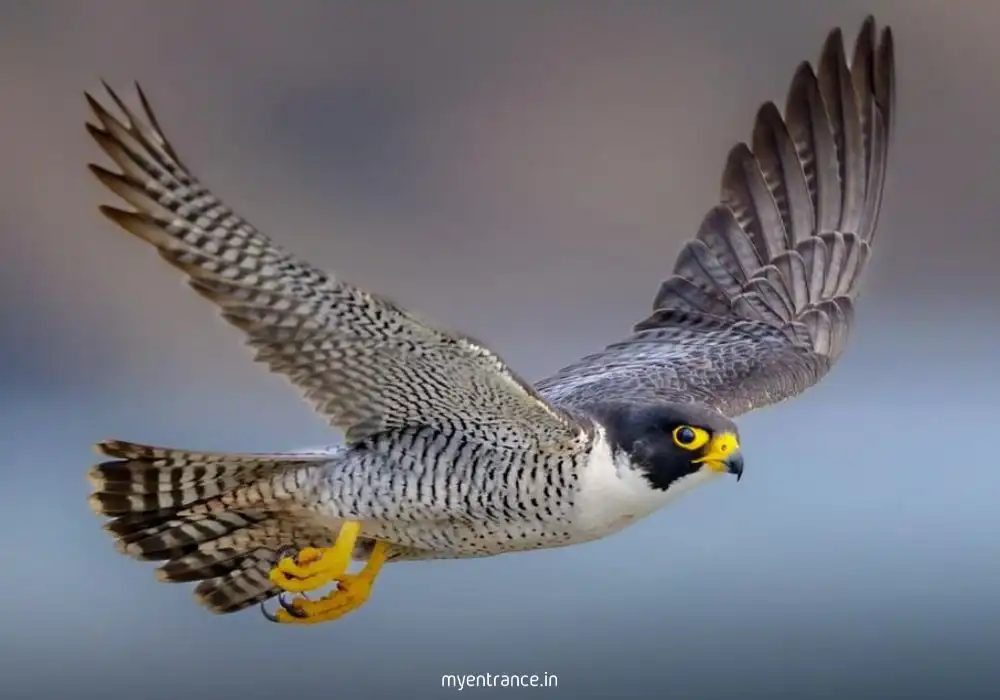Translate Language
Speed Demons of Nature: The Bird That Outraces Jets & What Competitive Aspirants Should Know
Mastering general knowledge topics like the world’s fastest animal is crucial for competitive exams like UPSC, SSC, and NID. The peregrine falcon’s record-breaking speed isn’t just fascinating biology—it’s a frequent question in GK sections. Understanding its adaptations also sharpens analytical skills for science-based exam segments.

The True Speed Champion Isn’t What You Expect
Forget cheetahs or race cars—the fastest creature on Earth is the peregrine falcon. This bird doesn’t just fly; it plummets at jaw-dropping speeds of 240 miles per hour (386 km/h) during hunting dives called “stoops.” To put that in perspective:
It’s 3x faster than a cheetah sprinting.
It outpaces skydivers in freefall and even low-altitude aircraft.
Scientific tests consistently clock it above 200 mph, crowning it the undisputed speed king of the animal kingdom.
Engineering Perfection: Built for Blazing Speed
How does a bird achieve such velocity? Nature engineered the peregrine like a precision missile:
Aerodynamic Blueprint: Stiff, pointed wings and sleek feathers slice through air resistance.
Nostril Baffles: Unique bony structures in its nostrils regulate airflow, allowing breathing during supersonic dives.
Eagle-Eyed Vision: Spots prey from over a mile away, ensuring stealthy, high-altitude attacks.
Global Adaptability: From Cliffs to Cities
Peregrines thrive on every continent except Antarctica. Their habitats? Remarkably diverse:
Natural landscapes like coastal cliffs, forests, and mountains.
Urban jungles: Skyscrapers, bridges, and cathedrals mimic their native cliff ledges.
Size-wise, they’re compact (14–19 inches long) but mighty, with wingspans up to 45 inches. Identify them by slate-gray backs, barred white bellies, and a signature “moustache” stripe near the eyes.
Hunting & Diet: Precision in Motion
As apex predators, peregrines hunt mid-air with terrifying efficiency:
Diverse Menu: Over 300 bird species, especially pigeons, ducks, and songbirds.
Kill Technique: Dive at terminal velocity, strike prey with razor-sharp talons, and recover in mid-flight—all in seconds.
A Conservation Victory Story
The peregrine falcon’s survival is a testament to human intervention:
Near Extinction: DDT pesticides caused eggshell thinning, decimating populations by the 1960s.
Recovery Milestones:
Global bans on DDT and captive breeding programs revived the species.
UK Success: Over 1,700 breeding pairs now nest in cathedrals and clock towers.
Urban Resurgence: Cities like New York host falcons on skyscrapers and bridges.
Why This Matters for Your Exams
GK Goldmine: Questions on “fastest animals” frequently appear in SSC, UPSC, and state PSC prelims.
Science Connections: Adaptations like aerodynamics link to physics (e.g., fluid dynamics), while conservation ties into environmental policies.
Case Study Alert: The DDT-ban recovery is a classic example for ethics/environment sections in UPSC mains.
Pro Tip: When studying wildlife topics, focus on adaptations + human impact. Exam panels love asking about conservation successes!
Final Thought: Just as the peregrine falcon masters speed and adaptability, so must you master diverse GK topics. Stay curious—nature’s lessons often mirror exam patterns!
Get 3 Months Free Access for SSC, PSC, NIFT & NID
Boost your exam prep!
Use offer code WELCOME28 to get 3 months free subscription. Start preparing today!















